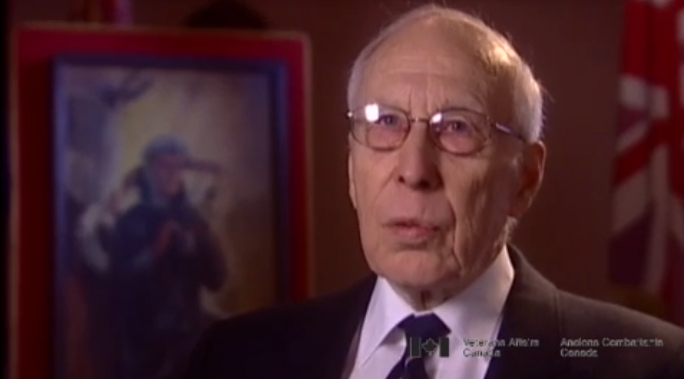HMS Uganda
Heroes Remember
HMS Uganda
Transcript
Description
The Uganda was brought back because of political reasons.
Rea Jervis
Mr. Jervis was born in St. Boniface, Manitoba, the youngest of six. His father came to Canada from Ireland to work on the railroad. At age 18, Mr. Jervis enlisted with the Royal Canadian Navy. Shortly after enlisting, the Canadian government agreed to send 1,500 Canadian sailors to Britain, to man the British cruiser HMS Belfast, and Mr. Jervis was one of those sailors. As a result, he became a member of the British fleet and found himself on a convoy to Murmansk, Russia. He was a torpedo man aboard the HMS Belfast and the HMS Uganda until the HMS Uganda was re-commissioned by the Canadian government. After the war, Mr. Jervis studied accounting and worked with the Public Service for 35 years. He then transferred his family from Winnipeg to Edmonton, where he operated his own company, Edgewood Batting Ltd.
Meta Data
- Medium:
- Video
- Owner:
- Veterans Affairs Canada
- Duration:
- 3:40
- Person Interviewed:
- Rea Jervis
- War, Conflict or Mission:
- Second World War
- Location/Theatre:
- Pacific Ocean
- Branch:
- Navy
- Rank:
- Torpedo Man
Related Videos
- Date modified:




